Car engine overheating is a serious problem that can significantly damage the engine and its components. Overheating occurs when the temperature of the engine coolant rises above its normal operating range.
To deal with the engine overheating issue, understanding the causes is crucial. The most common causes of engine overheating include the following:
- Low coolant level or problems with the engine oil
- Malfunctioning or clogged radiator
- Malfunctioning thermostat
- Defective water pump
- Faulty Radiator, among others.
Understanding the causes and symptoms of engine overheating can help prevent this problem and keep your vehicle running smoothly. This article will take you through 13 causes of overheating, their symptoms, and prevention tips.
Role Of The Cooling System In Regulating Engine Temperature
The cooling system plays a crucial role in regulating engine temperature in vehicles. The engine generates significant heat during operation, and without a proper cooling system, it could overheat and suffer irreparable damage.

The cooling system works by circulating coolant, a mixture of water and antifreeze, through the engine and radiator. As the coolant flows through the engine, it absorbs heat and carries it to the radiator, dissipating it into the atmosphere.
The process is facilitated by a water pump that pushes the coolant through the system. The cooling system also relies on a thermostat that monitors the engine’s temperature to regulate engine temperature. It also opens and closes to allow coolant to flow through the radiator as needed.
In addition, the system includes a fan that helps to draw air through the radiator and expel heat from the coolant. Regular maintenance of the cooling system is essential to ensure its proper functioning.

This includes checking the coolant level and replacing it as needed. You should also inspect the radiator and hoses for leaks or damage. Finally, test the thermostat and fan to ensure they are functioning correctly.
Common Causes Of Engine Overheating And Their Symptoms
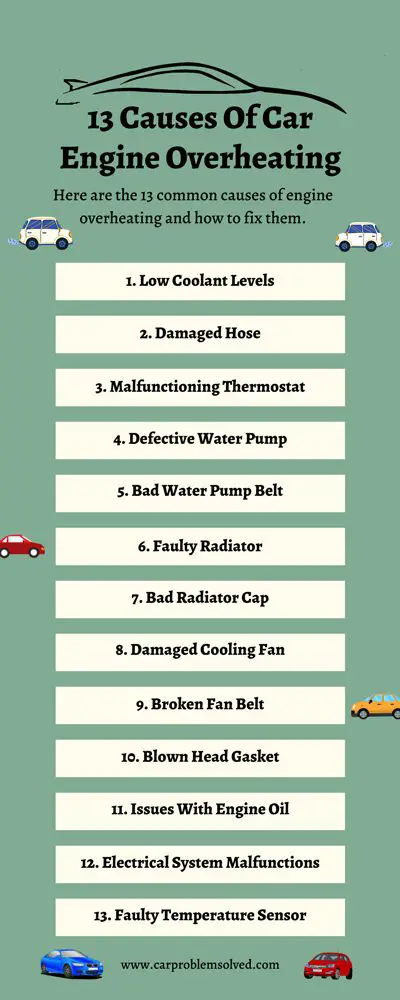
Here are the 13 common causes of engine overheating and how to fix them.
1. Low Coolant Levels
The coolant, also known as antifreeze, absorbs heat from the engine and dissipates it through the radiator. If the coolant level is low, there won’t be enough fluid to cool the engine, resulting in overheating.
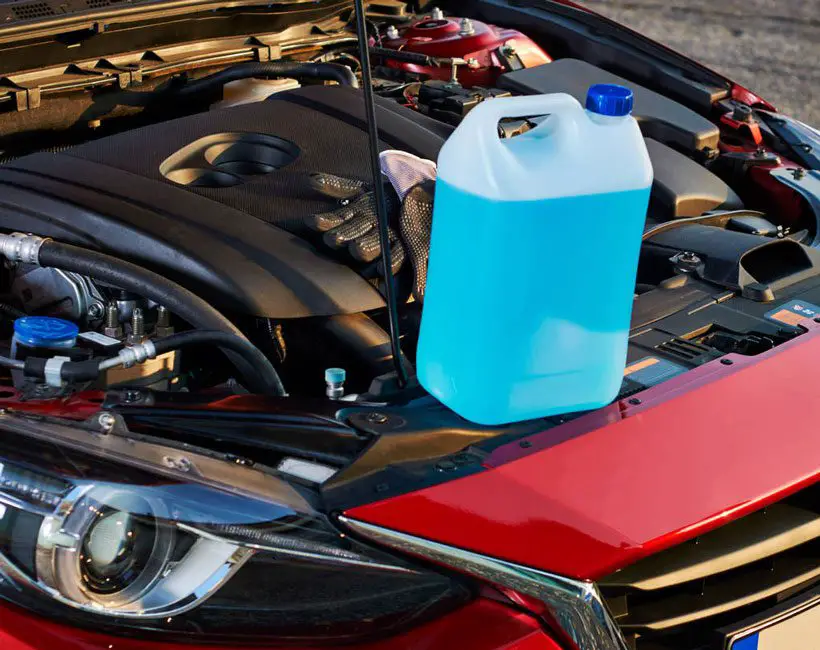
It’s important to note that a low coolant level isn’t just a cause of engine overheating; it can also lead to other issues, such as a damaged head gasket, which can be costly to repair. That is why it is critical to check the coolant level regularly and add coolant as needed.
Symptoms Of Low Coolant Level
- A warning light on the dashboard
- A decrease in engine performance
- Steam or smoke coming from the engine
2. Damaged Hose
Your vehicle’s cooling system hoses transport coolant to and from the engine, radiator, and other components. Hoses can become brittle, cracked, or worn over time, resulting in coolant leaks.
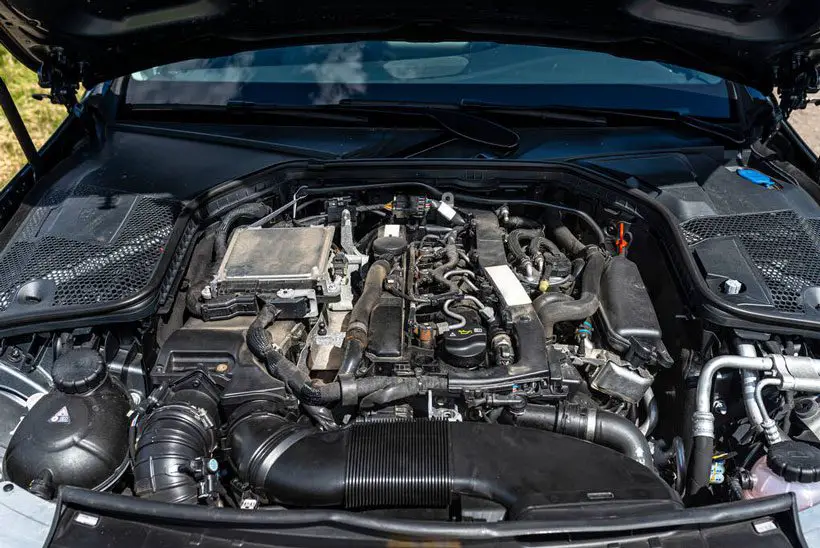
Coolant can leak out of a damaged hose, reducing the amount of coolant in the system and causing the engine to overheat. It’s crucial to inspect the hoses regularly and replace them as needed. Hoses should be replaced at least every four to five years or more frequently if they show signs of wear or damage.
Symptoms Of A Damaged Hose
- Low coolant levels
- Visible coolant leaks
- Steam or smoke coming from the engine
- A warning light on the dashboard
3. Malfunctioning Thermostat
The thermostat regulates the engine’s temperature by opening and closing the coolant flow to the radiator. When the engine is cold, preventing coolant from flowing.
The thermostat opens when the engine warms up to let the coolant flow in and help regulate the temperature. Coolant cannot flow through the engine if the thermostat does not open and remains closed, causing it to overheat.
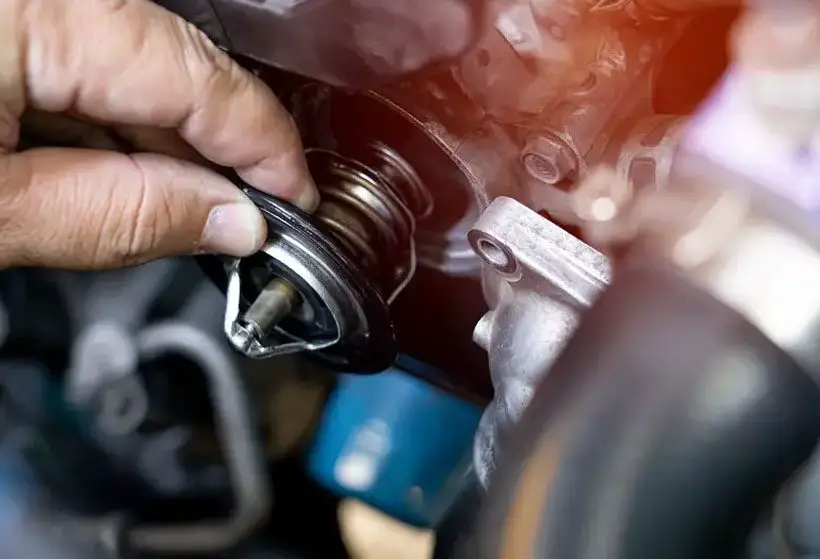
Also, on the other hand, coolant flows continuously through the engine if the thermostat becomes stuck in the open position. This can lead to poor fuel economy, reduced engine performance, and other problems.
Symptoms Of A Malfunctioning Thermostat
- Temperature gauge reading high
- Low coolant levels
- Poor engine performance
4. Defective Water Pump
The water pump is responsible for circulating coolant through the engine and radiator. A water pump can fail due to wear and tear, debris or corrosion damage, or other issues.
When it fails, it may not circulate enough coolant through the engine to keep it cool. The engine may overheat as a result of this.

Symptoms Of A Defective Water Pump
- A high-pitched whining noise coming from the engine
- Coolant leaks around the pump
- Low coolant levels
5. Bad Water Pump Belt
The water pump belt drives the water pump, which circulates coolant through the engine to maintain proper operating temperatures. If the water pump belt is faulty, it may not turn as it should, leading to inadequate coolant circulation and engine overheating.
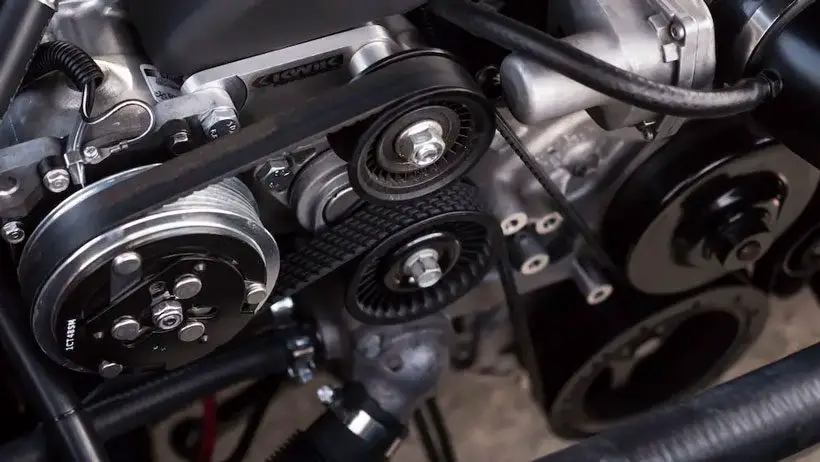
Symptoms Of A Bad Water Pump Belt
- Unusual noises, such as squealing or chirping
- Visible damage or wear on the belt
- Low coolant levels
6. Faulty Radiator
The radiator is responsible for cooling the engine coolant as it passes through the cooling system. A defective radiator can prevent the coolant from adequately cooling, leading to engine overheating. Radiator defects can include leaks, blockages, and damaged fins.
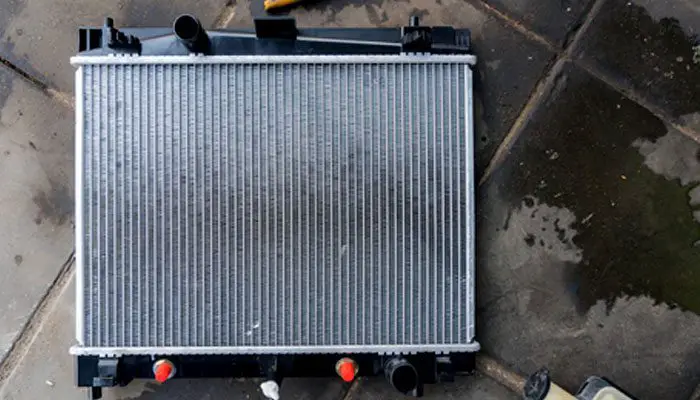
Symptoms Of A Defective Radiator
- Low coolant levels
- Visible coolant leaks
- Steam or smoke coming from the engine
- A warning light on the dashboard
7. Bad Radiator Cap
The radiator cap plays a crucial role in maintaining the engine’s cooling system’s proper pressure; if it is faulty, the engine can overheat.

Symptoms Of A Bad Radiator Cap
- A sweet smell coming from your engine bay
- Visible coolant leaks
- Decreased engine performance
- High-temperature gauge reading
- Steam or smoke coming from the engine
8. Damaged Cooling Fan
The cooling fan regulates the engine temperature by pulling air through the radiator. If it’s not working, the engine can overheat, causing serious issues.
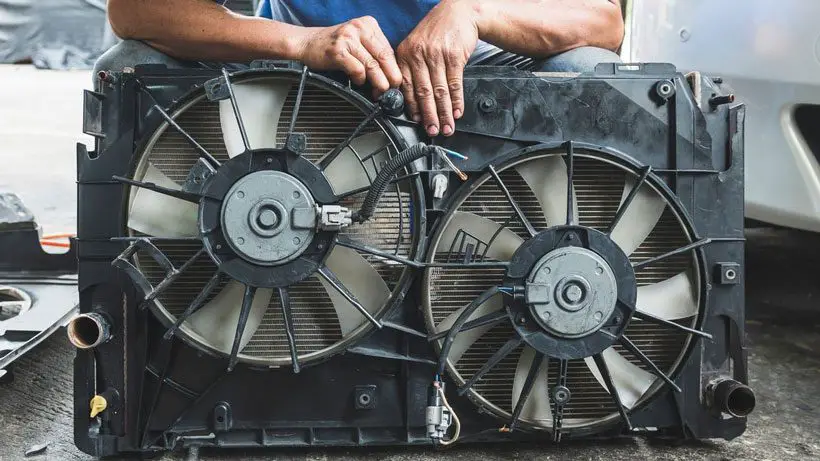
Symptoms Of A Damaged Cooling Fan
- A warning light on the dashboard
- Reduced air conditioning performance
- Overheating while idling or at low speeds
9. Broken Fan Belt
The fan belt, or the serpentine drive belt, drives the engine’s cooling fan. If the fan belt breaks or becomes loose, the fan may not turn at the correct speed or may not turn at all. This can reduce the amount of airflow through the radiator and cause the engine to overheat.
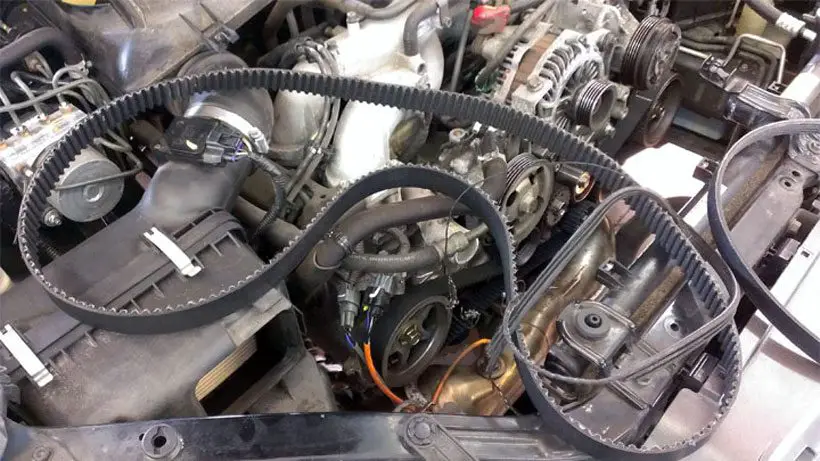
Symptoms Of A Broken Fan Belt
- A warning light on the dashboard
- A high-pitched squealing noise
- A decrease in engine performance
10. Blown Head Gasket
The head gasket seals the combustion chambers, coolant channels, and oil passages by sitting between the engine block and cylinder head. Coolant and oil mix when the head gasket fails, resulting in overheating and potentially catastrophic engine failure.
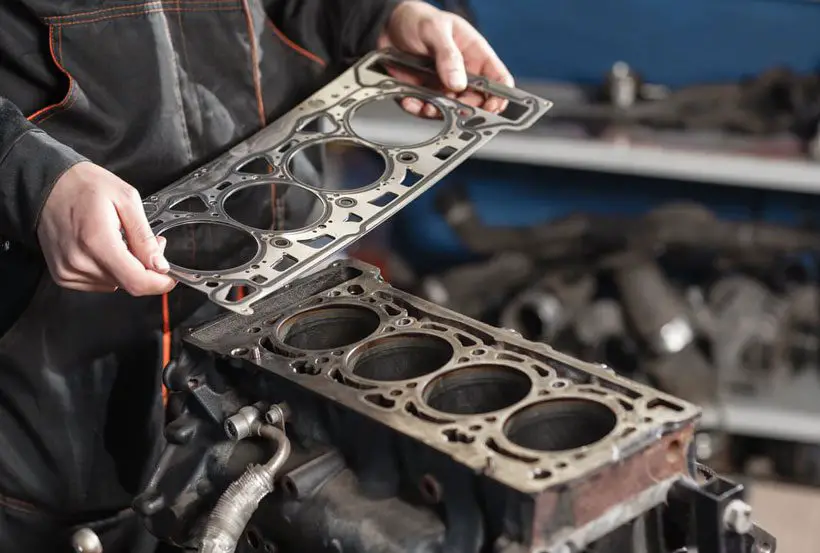
Symptoms Of A Blown Head Gasket
- White exhaust smoke due to steam; occurs when the coolant mixes with engine oil.
- A drop in your coolant level without apparent leaks could indicate a head gasket leak.
- A milky substance on your oil dipstick or filler cap indicates the coolant is mixing with the oil.
11. Issues With Engine Oil
Engine oil plays a critical role in maintaining the health and functionality of an automobile engine. It helps to lubricate the engine’s components, reduce friction, and prevent overheating.
If there is insufficient oil in the engine, or the oil is dirty, old, or degraded, the engine components are not adequately lubricated. This causes friction between them which produces heat.

Symptoms Of Engine Oil Issues
- A rise in temperature gauge
- Engine knocking
- The engine may start to run roughly or even shut down
12. Electrical System Malfunctions
If the electrical system malfunctions, it can cause the engine to overheat. This happens because the electrical system is responsible for regulating the engine temperature. It controls the operation of the cooling fan, thermostat, and other crucial components for maintaining the engine temperature.

Symptoms Of Electrical System Malfunctions
- A warning light on the dashboard
- Reduced engine performance
- The temperature fluctuates between hot and cold
13. Faulty Temperature Sensor
The temperature sensor is responsible for monitoring the engine’s temperature. It is also responsible for sending signals to the engine control unit (ECU) to adjust its operation to maintain the correct temperature.
If the temperature sensor malfunctions, it may send incorrect signals to the ECU, causing the engine to overheat.
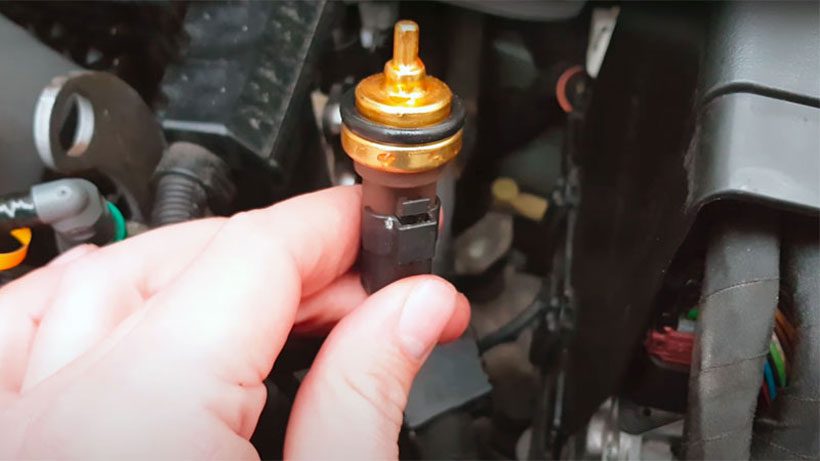
Symptoms Of A Faulty Temperature Sensor
- Inaccurate temperature gauge reading
- The engine running hot
Detecting and Diagnosing Overheating Problems
Here are some steps you can take to detect and diagnose overheating problems:
- Monitor the temperature gauge: Your vehicle’s temperature gauge can provide an early warning of overheating problems. If the gauge reads higher than usual or if the warning light on the dashboard comes on, it’s important to address the problem promptly.
Be sure to familiarize yourself with the normal range of your temperature gauge and the warning signals your vehicle uses.

- Check for leaks: Check for visible leaks under the vehicle or signs of coolant on the ground or other components. If you suspect a leak, inspect the hoses, radiator, water pump, and head gasket for signs of damage or wear. If any are damaged, replace them.
- Check the coolant level and the radiator cap: Check the coolant level regularly, and add coolant as needed. Be sure to use the correct type of coolant for your vehicle. Also, check the radiator cap for damages and replace it if necessary.
- Inspect the radiator: Inspect the radiator for signs of damage or wear, such as cracks or corrosion. Check the fins for debris or blockages that can restrict airflow. If the radiator is damaged or blocked, it may need to be replaced or repaired.
- Check the water pump: Check the water pump for leaks, damage, or wear, and inspect the impeller for signs of damage or corrosion. If the water pump is faulty, it may need to be replaced.
- Inspect the thermostat: Check it for proper operation, and replace it if necessary. One way to test the thermostat’s efficiency is to put it in hot water.
When in hot water, the thermostat should open up, and when you remove it from the hot water, it should close as it cools down.
- Check the cooling fan: Check the fan for inefficiencies, and if necessary, replace it. The problem is always the electric motor that turns the fan or the relay that causes it to rotate.
- Inspect the temperature sensor: Test the sensor using a multimeter to check if it’s functioning correctly. You need to set your multimeter to the resistance setting (Ω).
Then, connect your multimeter’s positive (red) probe to the terminal inside the temperature sensor’s electrical connector and the negative (black) probe to the sensor’s metal body or the engine block.
Take a reading with your multimeter. Compare this reading to the manufacturer’s specifications for your vehicle’s temperature sensor.
- Check the fan and water pump belts: Observe the belts while the engine is running. Look for any signs of fraying, cracks, or other visible damage. Also, check the tension of the belts. It should feel tight and not loose.
Prevention Tips For Avoiding Engine Overheating

Preventing engine overheating is crucial for ensuring the longevity of your vehicle’s engine. Otherwise, overheating can lead to severe engine damage and costly repairs. Here are some tips to prevent engine overheating:
- Regular maintenance: This includes regular checks of the coolant level, radiator, thermostat, and water pump. Also, make sure to schedule frequent oil and coolant changes.
- Avoid driving in extreme conditions: Avoid driving in extreme conditions, such as high temperatures and steep inclines, which can cause your engine to overheat.
- Use the correct coolant: Always use the recommended coolant for your vehicle. Using the wrong coolant can lead to engine damage and overheating.
- Avoid overloading your vehicle: Overloading your vehicle can strain the engine, leading to overheating. Always check your vehicle’s weight limits and avoid overloading.
- Monitor temperature gauge: Keep an eye on your vehicle’s temperature gauge while driving. Pull over and turn off the engine immediately if it starts to climb.
- Drive sensibly: Aggressive driving can cause the engine to overheat quickly. Drive sensibly, and avoid sudden stops and starts.
Conclusion
As we have discussed, several factors can cause engine overheating and, if not addressed promptly, can result in severe engine damage. Therefore, recognizing the symptoms of engine overheating and acting quickly can save you money on repairs and extend the life of your vehicle.
Diagnosing and fixing the issue is essential if you suspect your vehicle is experiencing overheating problems. Regular maintenance and responsible driving can help prevent overheating issues from occurring in the first place.
If you are not confident enough to deal with overheating issues, take your vehicle to a qualified mechanic who can properly diagnose the problem and recommend the appropriate repairs.
